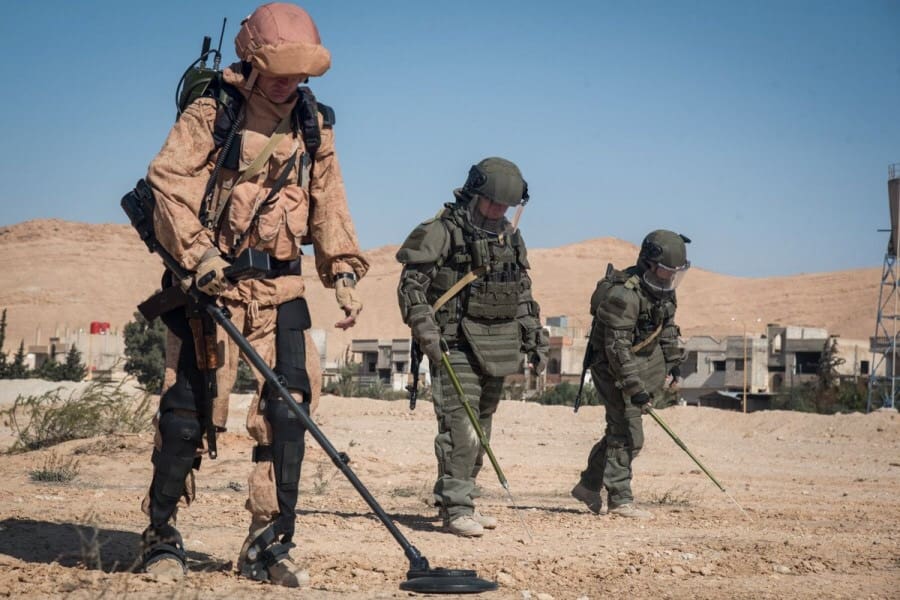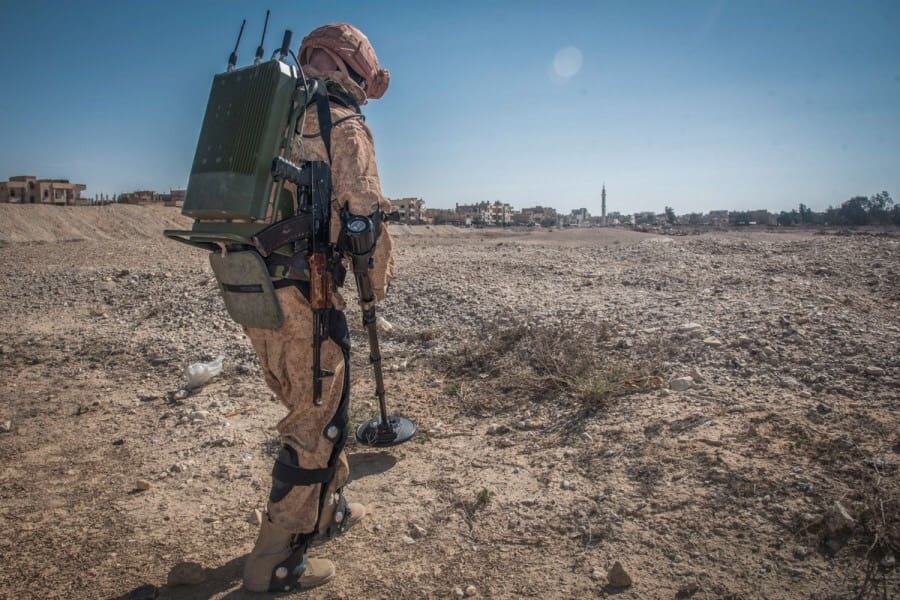Over the past few weeks we've shown you the Mawashi UPRISE Tactical Exoskeleton as well as a model under development by the US Army, called the Warrior Web physical augmentation suit. Both are unpowered with the commercially developed Mawashi product much closer to operationalization. We suggested during our coverage of the Army program that our troops may well face foes equipped with unpowered Exoskeletons long before the Army version was ready for use. As we now have evidence of Russian Sappers using the K-2 unpowered Exoskeleton during mine clearing operations in Syria, the probably Of that prediction just went up.


Weight 2 kg, the K-2 will support up to 50 kg, and like the UPRISE, the load is transferred down the spine, into the lower extremities and to the ground through a plate in the footwear.
Here are some demonstration videos.


All I saw was a guy constantly having to adjust the back tension so he could even bend side to side, on top of that he couldn’t bend his back to lower his hands below his knees….which I guess works if you want to squat for everything below knee level.
He also did not showcase what it is to run with that thing on.
On top of that, does ones plate carrier go over or under it?
If over, how easy is it to adjust the back tensioning knob with a ruck on as well?
I saw that as demonstrating back tension adjustments, not having to adjust it.
“Components. American components, Russian Components, All made in Taiwan”
I think regardless of how you may feel about Russia, EOD does God’s work. Wouldn’t refuse the chance to work with them to make the world a safer place.
Concur!
Doesn’t seem to have the ability to twist at the waist like the mawashi unit, but the external boot interface looks good if a little clunky.
It might be a little clunky and restrictive; but this follows Russian product development standards perfectly. Get a new item out there quickly and evaluate it, then make changes quickly and send it back out for further evaluation. Repeat until the product works “well”.
The western side will keep it in the lab for years until it’s “perfect” and ready to deploy, only to find out that it doesn’t work well “in the field” due to unforeseen issues. Then it’s back to the drawing board.
I dig it, looks pretty simple and straightforward. Looks to me like the foot plate is outside of the boot on this one?
Also made me think that the right knee pad insert would A) always stay in place unlike most knee pads and B) possibly prevent over-extension.
Made me think that the structural components could probably do double duty as leg armor with the right materials, at a significant weight penalty I’m sure but probably lighter then mounting armor plates to a more skeletonized leg support.